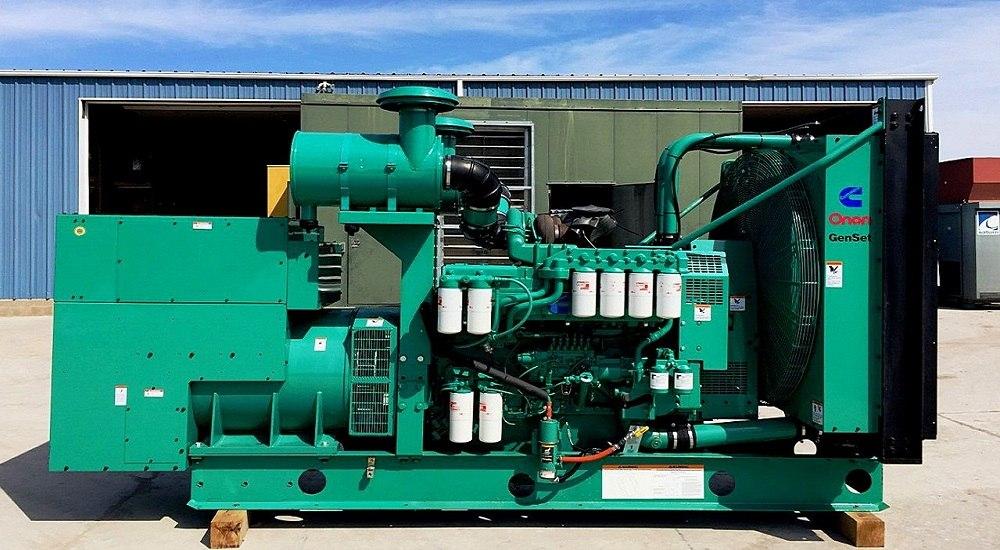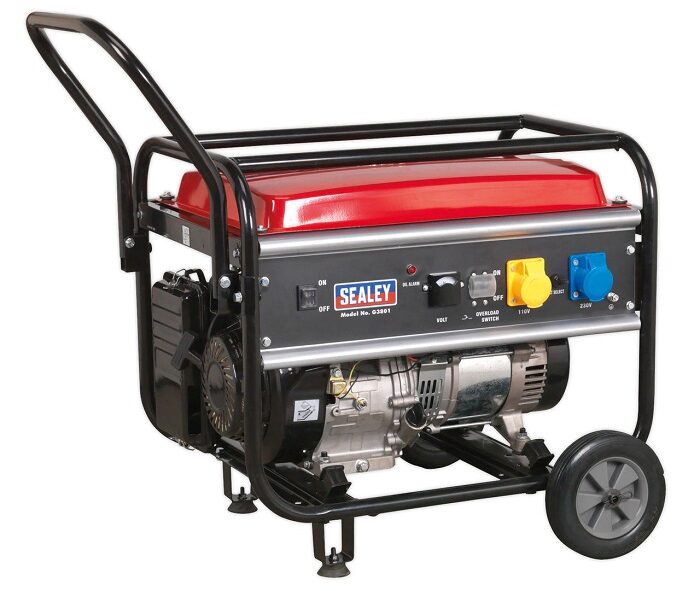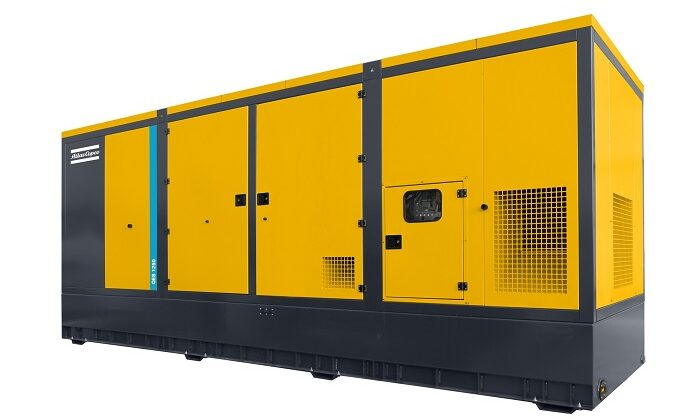What is a generator? What is it used for? How does it work? Does it have different types? If yes, what are they? What are the different components of a generator and what do they do? These are the questions that should be answered before we buy a generator. If you need a generator and are about to buy one, we have good news for you, because we are going to answer all these questions in this article comprehensively and creatively.
Generators are handy gadgets that provide electrical power during a power outage, allowing daily routines and commercial operations to continue uninterrupted. Generators come in a variety of electrical and physical layouts to suit a variety of applications. Generators are available from a variety of suppliers and companies, as well as various Manufacturers and Distributors, and there are many Generators for Sale on Linquip.
There is a comprehensive list of generator services on the Linquip website that covers all of your electrical needs. Linquip vendors can assist you with this. Please contact Linquip’s Generator Experts to learn more about how to connect with a diverse group of service providers who consistently deliver high-quality items.
To know what exactly a generator is, you need to know what it does, where it is used, what its working principle is, how many types it has, and what components it consists of. Linquip has gathered all the necessary information and we are going to dell deeply on each of these topics in this article. So read the following sections to have all the answers you need to know.
What Is a Generator?
Generators are useful devices that provide electrical power during a power cut-off and prevent discontinuity of day and night affairs and activities or disruption in operations in different conditions and places. All a generator does is to convert the mechanical energy provided from an external source, to electrical energy to provide enough energy for other appliances. It works based on the Faraday law of electromagnetic induction.
This law says that wherever a conductor is put among a varying magnetic field, the electromagnetic flux is induced. There are different electrical and physical configurations for Generators. This diversity in the configuration is for use in different applications. In the following sections, we will elaborate on how a generator works, what different types it has, and what parts a generator consists of. Read on to get more acquainted with the world of this amazing device.
Generator’s Working Principle
First of all, keep in mind that a generator is not a device that creates electricity. A generator uses the provided mechanical energy and forces the flow of present electric charges inside the wire of its windings. This flow of electric charges makes the output electric current used for different purposes.
To understand what a generator produces, it is better to consider a water pump. A water pump makes the flow of water but does not create the water flowing through it. In simple words, generators generate electrical energy by capturing the power of movement and turning it into electricity by forcing electrons from external sources through an electrical circuit. Generators are the same as electrical motors but they work in reverse.
As mentioned before, a generator works based on the principle of electromagnetic induction introduced by Michael Faraday in the 19th century. This law says that when a conductor moves inside a magnetic field, the electrical charges are created and can be led to make a flow. Again, in simple words, a generator is just a couple of rotating wires near or inside a magnet or magnetic field that causes the electrical current. The example of a water pump is the greatest to understand what a generator does.
Now that you know what a generator does and how it works, you are closer to the answer to the question “What is a generator”. To complete the definition of the generator, let’s see how many types it has and how different they are. In the next section, we are going to talk about various types of generators. Stay with us.
Types of Generators
The generators are divided into two different and basic classes or categories which are AC (Alternating Current) generator and DC (Direct Current) generator.
-
AC Generator
The AC generators or as they are also called the Alternator, are one of the most essential devices for providing electrical power in several conditions in our life. ACs work based on the principle of electromagnetic induction. AC generators are classified into two categories: induction generators and synchronous generators. As there are no brushes in this type of generator, maintenance is almost free. the size of ACs is smaller in comparison to DCs. So, they are more commonly used. And last, what makes this type more popular is that the losses of ACs are less than DCs.
-
DC Generator
This type of generator is commonly found in off-grid applications. The DCs are classified into three main categories according to the way their magnetic field is developed in the stator: permanent-magnet generators, separately-excite generators, and self-excited generators. Some advantages of DCs are: they are designed plainly. They are usually used for operating large motors and electrical devices requiring direct control. DCs diminishes the fluctuations described by smoothing the output voltage through a regular set of coils around the armature for some steady state applications.
Components of Generators
So far, we have got familiar with the working principle and different types of generators and gradually we are getting closer to the answer to the question “What is a generator?” in this section, we are about to make you acquainted with the main parts of a generator. Apart from the mainframe, a generator consists of 6 main components: the engine, the fuel system, the alternator, the cooling, exhaust, and lubricating systems. We put these 6 parts into 4 main categories. Keep reading to learn more about these components.
-
The Engine
Maybe the most important part of every machine is the engine. it is generally the part of the whole system that converts the fuel into usable energy and helps it move or perform its mechanical function. Thus, the engine is sometimes called the machine’s prime mover. In a generator, the engine fuel source can be gasoline, diesel, natural gas, propane, bio-diesel, water, sewage gas, or hydrogen. The engine uses one of these kinds of fuel to create mechanical energy the generator will convert into electricity. Some engines commonly used in the design of generators include reciprocating, steam, turbine engines, and microturbines.
-
Fuel System
All the Generators that are running on one of the different types of fuel mentioned before have a system that gathers and pumps the fuel to the engine. The fuel system contains a tank storing enough fuel to power a generator for an equivalent number of hours. There is also a pipe connecting to the tank and then to the engine, and the return pipe connects the engine to the fuel tank for the return of fuel.
There is a fuel pump whose job is to move the fuel from the tank through a fuel pipe and then to the engine. Another part of the fuel system is the fuel filter whose job is to filter any debris from the fuel before it moves to the engine. The last component of the fuel system is the fuel injector. The fuel injector’s job is to atomize the fuel and then inject the fuel directly into the combustion chamber of the engine.
-
Alternator and Voltage Regulator
Maybe we can say that the main job of a generator is up to the alternator. This component turns the mechanical energy produced by the engine into electrical current. The alternator embodies the stator, a stationary part of a set of coils, and the rotor or the armature which creates a stable turning electromagnetic field around the stator. Overall, the alternator generates an electrical voltage that must be regulated to produce a constant current suitable for practical use.
-
Cooling, Exhaust, and Lubricating Systems
There is a cooling system to prevent overheating and regulate the temperature of the generator components during use. Some of the generators use a fan, coolant, or both of them to control the temperature of the generator at work. As the combustion chamber of the generator converts fuel, the generator will also create exhaust. The harmful gases emitted by the generator during use are dispelled by exhaust systems. The last part is the lubricating system. As Generators consist of many moving parts and each of them requires oiling to move smoothly, there should be a lubricating system that keeps the generator well-oiled and smooth.
Conclusion
In this article, we tried to show you what exactly a generator does. To answer the question “What is a generator?” we analyzed the working principle of a generator and how it works. We explained the rules a generator follows to turn mechanical energy into electrical power. After that, we reached the different types of generators and talked about two main types of generators.
We discussed the different main parts of a generator. If you have any experience using different types of generators, we will be very glad to have your opinions in the comments. By the way, if you have any questions about this topic and if you still have ambiguities about generators in your mind, you can sign up on our website and wait for our experts in Linquip to answer your questions. Hope you enjoyed reading this article.
Download What is a Generator PDF
Buy Equipment or Ask for a Service
By using Linquip RFQ Service, you can expect to receive quotations from various suppliers across multiple industries and regions.
Click Here to Request a Quotation From Suppliers and Service Providers
Read More on Linquip
- Caterpillar Industrial Diesel Engines Products
- Caterpillar Heavy Duty Diesel Engine Products
- Caterpillar Marine Diesel Engines Products
- Caterpillar Heavy Duty Gas Engine Products
- Caterpillar Diesel Generator Set Products
- Caterpillar Heavy Duty Diesel Generator Set Products
- Parts of DC Generator: Explanation of Parts, Working, Types, Advantages & Disadvantages
- What is Power System? Definition & Types
- Diesel Generator Set
- Caterpillar Heavy Duty Diesel Engine Products
- A Clear Classification of DC Generators
- Type of Generator: Learn the Basics, Get the Most Out f it!
- Parts of Generator: a Simple, Yet Useful Guide
- Generator Maintenance: The Most Essential Tips to Know
- Best Portable Generators: Everything You Need to Know
- A Clear Classification of AC Generators
- What are The Electric Generator Parts?
- Concise Guide to Generator Transfer Switch Installation Cost in 2021
- What Is an Induction Generator? An Ultimate Guide
- Working Principle of Diesel Generator + Diagram
- How Long to Wait After Using Ozone Generator: Best Guide
- Efficiency of Diesel Generators Calculation: Formula & Equation
- What is Generator Efficiency? Calculation & Formula Guide
- The 5 Best Gasoline Generator
- Induction Generator vs Synchronous Generator: A Comprehensive Comparison
- Best Dual Fuel Generator
- What is an Induction Generator? An Ultimate Guide
- Diesel Generator Parts: A Complete Description
- What are the parts of AC Generators?
- What are The Electric Generator Parts?
- A Simple Guide to the Difference Between Motor and Generator
- Best Portable Generators: Everything You Need to Know
- Parts of Generator: a Simple, Yet Useful Guide
- What Is a Generator? A Comprehensive Explanation of Working Principles, Types, and Components
- What Does an Alternator Do?
- Alternator Slip Rings: discover the basic purpose and other detailed forms
- Alternator Construction and Design
- Parts of DC Generator: Explanation of Parts, Working, Types, Advantages & Disadvantages
- Types of Alternator: Features, Advantages, and Vast Usage
- Difference between AC and DC generators: An easy to understand guide
- Synchronization of Generators: Step-by-Step Guide + PDF
- More Details about Siemens Generators
- More Information about Siemens Generators Services
- Read More Information about Siemens Generator Installation Services
- Read More Details about Siemens Generator Maintenance Services
- More Information about General Electric (GE) Generators
- More Information about GE Generator Services
- More Details about GE Generator Installation Services
- More Details about GE Generator Maintenance Service
- What are Alstom Generators? (Clear Guide)
- How To Store Your Generator Safely? (Clear Guide)
- How To Quiet A Generator? (Comprehensive Guide)
- How Do I Choose The Right Generator For My Needs?
- How to Calculate The Fuel Consumption of the Generator?
- How Do I Maintain The Battery of My Generator?
- How Long Can a Generator Run Continuously?
- How to Use a Portable Generator During a Power Outage?
- Why Do We Use AC Instead of DC? Exploring the Advantages of Alternating Current
- Main Benefits of Generators for Disaster Response
- How To Clean Up Generator Power? (Clear Guide)
- What Are The Benefits of Generators?
- Do Generators Work In A Flood? (What to Do If Your Generator Is Flooded?)
- Can A Home With Solar Panels Use A Generator?
- Converting Your Generator To Propane: Step By Step (Clear Guide)







Ilike so much that notice is nice clear
how fast does a generator have to spin to create power is there rpm standard or can you use lower speed to make power
Thanks for visiting our website. You can visit our expert page and take advice from hundreds of professionals on your issue.